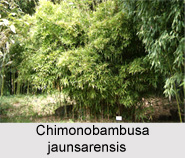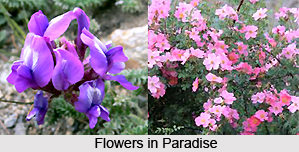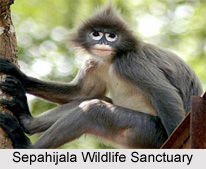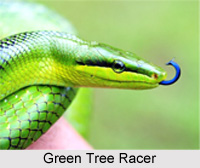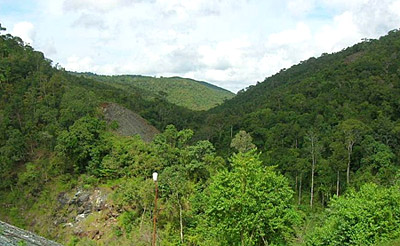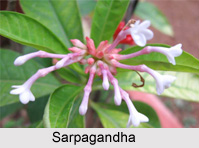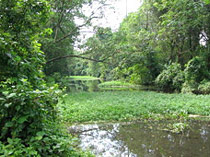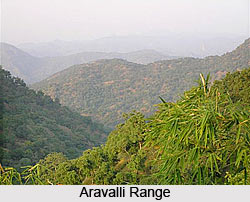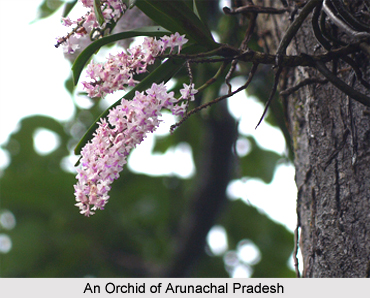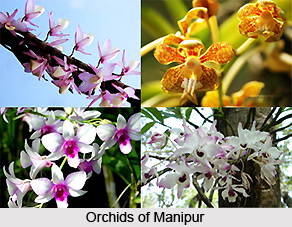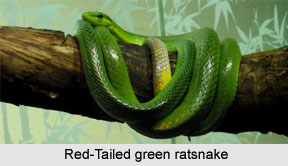 Red-Tailed Green Rat Snake is an Indian Reptile that bears a scientific name "Gonyosoma oxycephalum" found in Southern part of Asia and Pan Asia.
Red-Tailed Green Rat Snake is an Indian Reptile that bears a scientific name "Gonyosoma oxycephalum" found in Southern part of Asia and Pan Asia.
Category of Red-Tailed Green Rat Snake
Red-Tailed Green Rat Snake is also known as arboreal rat snake and red-Tailed Racer is a species of snake.
Structure of Red-Tailed Green Rat Snake
Red-Tailed Green Rat Snake is a robust snake with powerful, smooth scales on its belly that is ideal for climbing trees and across branches. It has smaller, smooth scales on its back that is usually bright green or light green and may have black net-like pattern. A cream-colored morph with a yellow head exists in Panay, in the Philippines.
Body of Red-Tailed Green Rat Snake
Red-Tailed Green Rat Snake has a green body with a red tail but is usually brown. It also has a dark line horizontally across its eye. On the sides of its black tongue there may be a Brown and blue colour. The top of the head maybe dark green, yellow-green or yellow in colour.
Female Red-Tailed Green Rat Snake
The female of Red-Tailed Green Rat Snake can reach a length of up to 2.4 m (almost 8 feet), while the male is generally a little bit smaller but brighter in coloration. Its average life span in captivity is 20 years.
Sexual Maturity of Red-Tailed Green Rat Snake
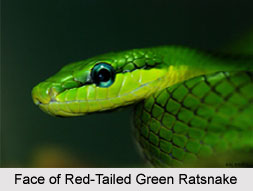 Red-Tailed Green Rat Snake reaches sexual maturity at 4 years of age, and its eggs have a hatching time from 13 to 16 weeks. The female lays on average between 3 and 8 eggs usually between September and January and the hatchlings are about 45 cm (18 inches) long.
Red-Tailed Green Rat Snake reaches sexual maturity at 4 years of age, and its eggs have a hatching time from 13 to 16 weeks. The female lays on average between 3 and 8 eggs usually between September and January and the hatchlings are about 45 cm (18 inches) long.
Habitat of Red-Tailed Green Rat Snake
Red-Tailed Green Rat Snake lives and spends its life in the trees and in cavities in trees. It seldom descends to the ground. When the snake is stressed, it may inflate a bag of air in its neck, making it appear larger in size.
Captivity of Red-Tailed Green Rat Snake
In captivity, Red-Tailed Green Rat Snake has quite the `attitude` and may strike at or bite an unwary handler. Its temperament can be unpredictable and may change from time to time but an individual may become tame through proper handling.
Feeding of Red-Tailed Green Rat Snake
Red-Tailed Green Rat Snake feeds almost exclusively on birds, bird eggs and bats. It catches them in mid-air while hanging amongst branches. In captivity, it can be trained to feed on rodents such as mice and rats.
Distribution of Red-Tailed Green Rat Snake
Red-Tailed Green Rat Snakes are concentrated in the regions like Indonesia like Bangka, Belitung, Java, Kalimantan/Borneo, Karimata, Legundi, Lombok, Mentawai islands, Natuna islands, Nias, Panaitan, Riau archipelago, Sebuku, Sumatra, Tambelan archipelago, Malaysia, Malaya and East Malaysia, Pulau Tioman, Singapore Island, Penang Island, Indian states like Andaman and Nicobar Islands, Kerala, Karnataka, Myanmar, Thailand (including Phuket), Cambodia, Laos, Vietnam, Philippine Islands, Balabac, Bohol, Lubang, Luzon, Negros, Palawan, Sulu Archipelago, Panay.
